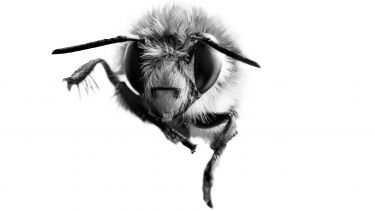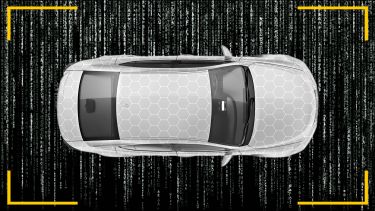Bees are helping design the next generation of autonomous technology

Companies around the world are attempting to master autonomous technology through artificial intelligence and deep learning. But nature has already solved it with its vast array of insects and birds seen operating autonomously throughout the natural world. University of ╦«ę╦Ę╗ company, , has extracted exactly how nature has achieved this through 600 million years of evolution. Now, theyŌĆÖre using it to change the face of autonomous technology.
Over the past 10 years the likes of Tesla and Google have increased awareness and interest in autonomous technologies, like self-driving cars and drones. Their technologies rely on the deep learning model of Artificial Intelligence (AI). These are based on statistical learning methods inspired by, but quite unlike, the human brain. But there is growing recognition that deep learning is not up to the task of providing robust autonomy in machines.
Deep learning is a part of machine learning where the technology is fed information in the form of texts, sounds or imagery. The information then helps it to perform tasks. ŌĆ£The process mimics a tiny part of the brain, repeats that over and over and then throws lots of training data at it,ŌĆØ explains Professor James Marshall. James is Professor of Theoretical and Computational Biology and the Chief Scientific Officer at new University of ╦«ę╦Ę╗ spin-out company, Opteran.
The problem is that thereŌĆÖs no way of knowing exactly what information has been learnt, or more importantly, what hasnŌĆÖt been learnt. In the case of autonomous technology, this can be a huge safety risk. It can be the reason for a vehicle causing an accident or a drone crashing into you.
Professor James Marshall
Opteran, CSO
For autonomous technology to be successful we have to be certain that it will operate as expected and we need to understand why it has made certain decisions. Opteran has gone back to nature to find a solution to the problem of machine learning. For James and colleagues Dr Alex Cope (Chief Technology Officer) and David Rajan (Chief Executive Officer) this has meant reverse engineering the brain of an insect. The aim was to understand, and then replicate, what in the brain drives behaviour that prevents a bee from flying into a building, for example.
The team at Opteran began by looking at how insects see and process the world, to build up a picture of their high level functions of navigation. For example, bees are the perfect source of inspiration, because their brains are only 1m neurons, the size of a pin-head, making them small enough to understand. But 600 million years of evolution mean they also exhibit complex navigational capabilities. A key aspect of this is optic flow. ItŌĆÖs a way of measuring how objects move across our visual field. ŌĆ£Bees use motion to not only work out if theyŌĆÖre going to hit something but also how far away something is,ŌĆØ explains Alex.
By building up this information from bees and seeing how it works, the team has been able to produce ŌĆśsilicon brainsŌĆÖ that mimic the structure and function of bee brains. These can then be implanted into autonomous technology. ŌĆ£A real highlight for me was running our first real-world test. I tried to fly a drone at the wall to see if it could turn itself. It worked perfectly,ŌĆØ says Alex.
ŌĆ£OpteranŌĆÖs approach is safer and more efficient than current deep learning approaches being used by the likes of Tesla,ŌĆØ explains James. ŌĆ£Since we designed our algorithms to work the way brains are designed to, rather than trained them, weŌĆÖre in a better position to understand how they work and what decisions they will make,ŌĆØ explains James.
The lightweight, small size and ultra low power nature of the chip makes OpteranŌĆÖs solution applicable to a wide variety of uses. OpteranŌĆÖs technology can be transferred onto a custom silicone chip and implanted into a drone weighing less than 250g for instance. There it provides complete onboard autonomy from a single low-resolution camera.
ŌĆ£The technology can be used for collision avoidance and navigation as well as commercial and industrial robotics that focus on warehouse automation, industrial cleaning, security and mining,ŌĆØ explains David. Precision agriculture also provides an opportunity for this technology. Drones can be used to safely navigate acres of farmland, depositing microdoses of weed killer onto crops. This increases plant yields with reduced chemical impact on the environment.
A little closer to home, applications include last mile delivery which highlights an important aspect of this technology in the current coronavirus pandemic. Autonomous technology enables daily activities to continue without the need for physical interactions. As weŌĆÖve seen, this can be fundamental to slowing and preventing the spread of disease and to treating and assisting those in need at a time of crisis.
The team at Opteran have spent the last eight years developing this technology.
Our unique advantage is that weŌĆÖve understood and created a process to extract real brain function and turn it into algorithms on silicon. This is a paradigm shift that enables industry to create a new frontier of brain biomimicry that isnŌĆÖt about artificial intelligence but about natural intelligence. This is orders of magnitude more efficient. In the long term this will create a billion pound market opportunity for us to be the ŌĆśrealŌĆÖ brain inside every autonomous machine.
David Rajan
CEO, Opteran
ŌĆ£Nature will always find the easiest way to solve a problem,ŌĆØ says Alex. In this case, it came from bees and thanks to their innate and effective navigation systems Alex, James, David and the rest of the team have made significant advances in the field of autonomy. The technology developed at Opteran is making autonomous machines safer and easier to use than ever before, leading the way for a future where machine intelligence isnŌĆÖt artificial but natural.
By Alicia Shephard, Research Marketing and Content Coordinator
Further information
, CEO
Dr Alex Cope, CTO
Media
Social media
For further information contact:
Sean Barton
Media Relations Officer
University of ╦«ę╦Ę╗
0114 222 9852
s.barton@sheffield.ac.uk



